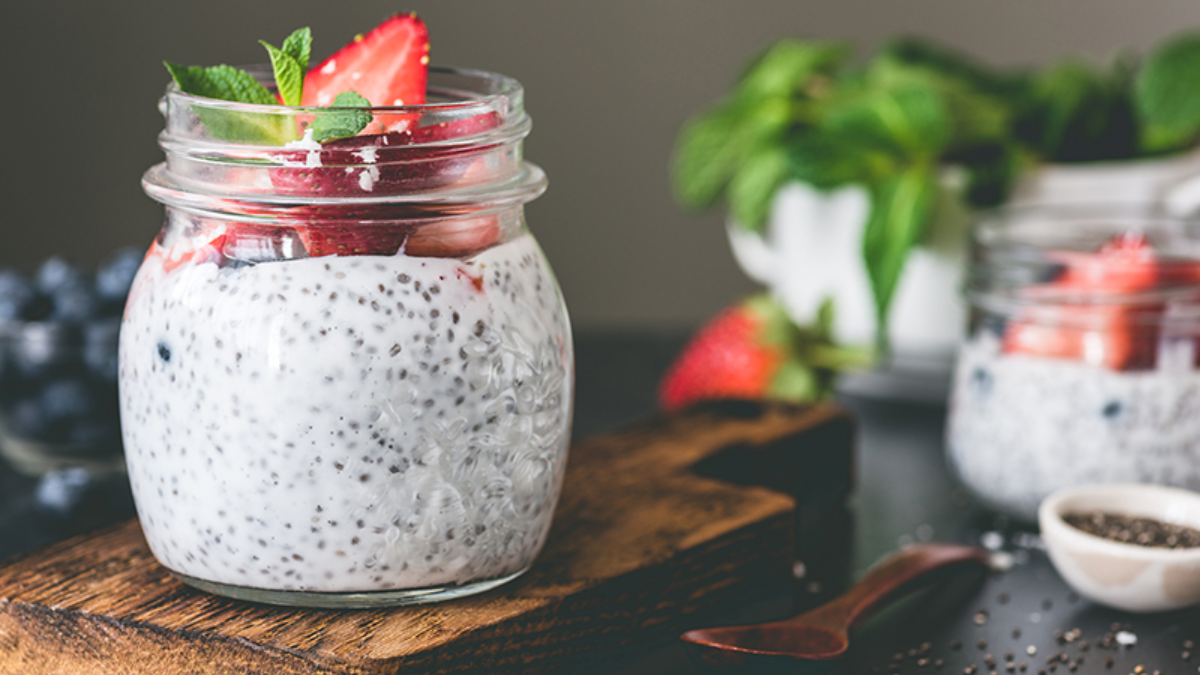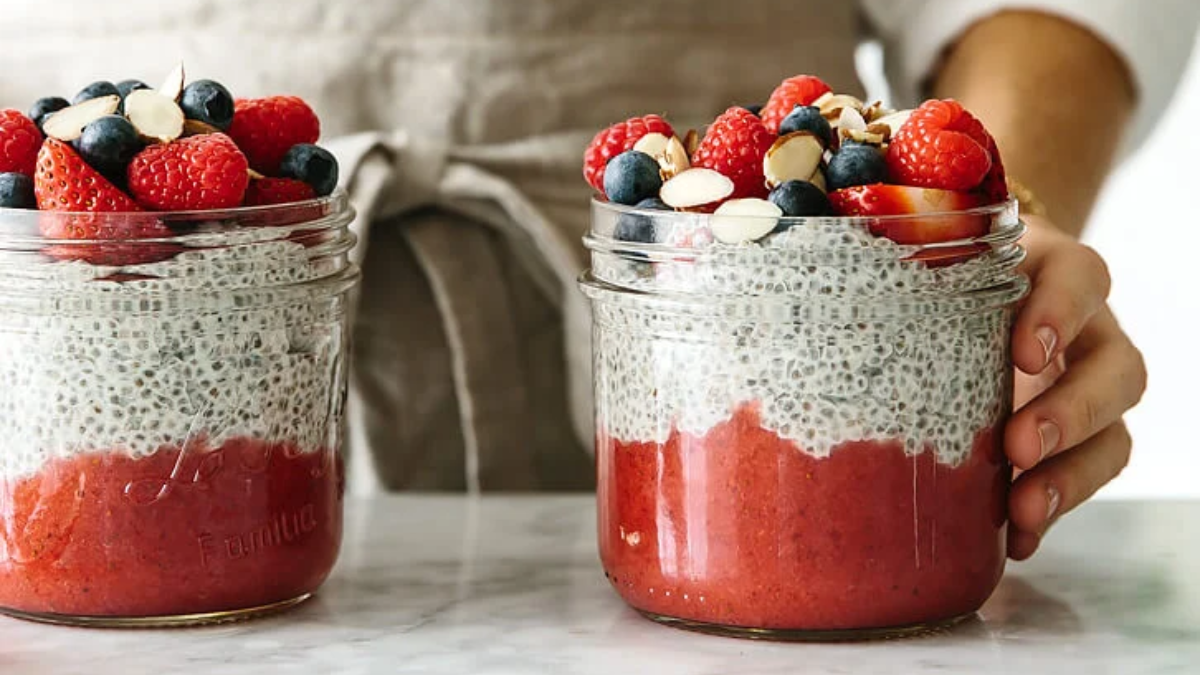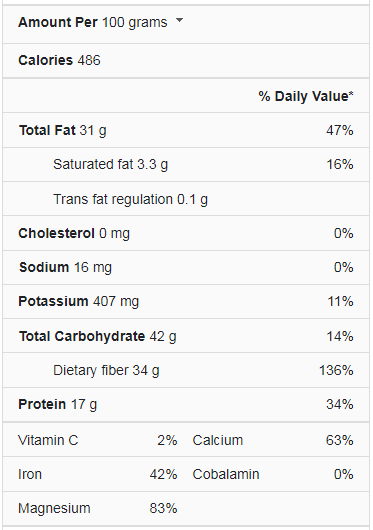For a nutritious and delicious breakfast, try chia seeds in the pudding, granola, and other recipes. Chia seeds are extremely low in calories and are a fantastic source of fiber and omega-3 fatty acids. You can even eat them on their own as a snack. If you want to add more nutritional value, try making a chia seed smoothie or incorporating them into your daily diet.
A vegan diet can be adapted for several chia seed recipes. For instance, wide chia seed varieties can be used to make chia seed pudding. Additionally, you can choose to use white or black chia seeds. Though both types of chia seeds have trace quantities of Omega-3s, black chia seeds have a higher protein content than white ones. Additionally, breadcrumbs and chia seeds can be combined to create a delectable treat for all ages.
Chia Seed Nutrition Facts
What are Chia Seeds?
Chia seed is a tiny, black and white seed with two distinct colors. The chia seed is a nutrient-dense food from the desert plant Salvia hispanica, which was first cultivated in Mexico. You feel a blast of energy from it! Chia signifies strength, which says a lot about how amazing it is.
It is a gluten-free whole grain with a very subtle, nutty flavor. Add a spoonful of chia seeds to 8 to 10 ounces of water or juice for the easiest way to consume them. You can drink it right away or wait 10 minutes for the seeds to gel, creating a nice mouthfeel for the beverage.
Taste
Chia seeds are adaptable for sweet and savory applications thanks to their mild nuttiness. Chia seeds crunch while they are dry, but when you add liquid to them, they swell and take on a gel-like consistency, drastically changing the texture.
How to Make the Best Chia Seed Recipe?
Although there are many different chia seed recipes, chia seed pudding is one of the very popular and delicious recipes:
Ingredients
Here’s what you’ll need to make this chia seed pudding recipe:
- 2 cups light coconut milk or homemade almond milk
- Six tablespoons of chia seeds
- One tablespoon of maple syrup
- ¼ teaspoon cinnamon
- ⅛ teaspoon sea salt
Steps to Follow
Here are the steps to follow:
- First, combine the ingredients in a lidded Mason jar. It should be fairly large; look for one with a volume of 3 to 4 cups.
- Next, shake! Secure the lid on the top of the jar and vigorously shake to combine the ingredients.
- Then, chill. Pop the pudding in the fridge for a few hours.
- An hour or two later, stir. This step is crucial for breaking up any seed clumps within the pudding. If the chia seeds stay together, they won’t absorb the liquid in the jar, making for a lumpy, crunchy chia seed pudding. No, thanks!
- Then, chill again. After stirring, cover the jar, and refrigerate overnight.
What Topping is the Best?
This dish has countless taste combinations and is very adaptable. You may use dried fruit, fruit purées, nut butter (like my own almond butter), and spices in addition to fresh fruit (cinnamon, nutmeg and cardamom are great).
Avoid adding nuts and seeds before keeping them because they will become soggy. After the chia pudding has thawed, stir in the nuts and seeds just before serving.
Topping Combinations
- Strawberries + blueberries + raspberries
- Mango + shredded coconut
- Nectarines + candied ginger
- Pineapple + mango + kiwi
- Blueberry puree + almond butter + blackberries
- Raspberries + shredded coconut (on the chocolate chia pudding)
How to Store Chia Seed Pudding to Make them Last Longer?
Here are some steps on how to store chia seed pudding to make it last longer in the fridge, freezer, and at room temperature:
- When purchasing chia seeds from the market, select only the fresh one
- Select the ones free from mold to help keep them for long.
- Chia seed pudding should be kept in an airtight container
- And place it in the fridge or freezer.
What are the Health Benefits of Chia Seeds?
Here are the health benefits of chia seeds:
Highly Nutritious
Chia seeds are nutrient-dense and high in calcium, manganese, magnesium, selenium, copper, iron, and other minerals. They are also a fantastic source of omega-3 fatty acids, which reduces the risk of heart disease, cancer, and many inflammatory diseases by scavenging free radicals.
Good for Weight Loss
These seeds expand in your stomach after consuming them due to the soluble fiber’s ability to absorb water, heightening your sense of fullness. Chia seeds can therefore aid in maintaining a healthy weight by causing you to feel fuller while consuming less food.
Lowers Heart Disease Risk
You can prevent many diseases, including heart disease, by eating chia seeds. The seeds also include a lot of fiber, which can lower blood pressure and your risk of heart disease.
Important for Bone Health
Magnesium and phosphorus, two nutrients vital for healthy bones, are abundant in chia seeds. A single ounce of the seeds also provides 18% of your daily calcium needs, which are necessary for healthy bones, muscles, and nerves. When compared gram for gram, dairy products and chia seeds have a higher calcium content.
Controls Blood Sugar Levels
For those who have diabetes, high blood sugar levels could be problematic. Heart disease risk is enhanced by having high fasting blood sugar levels, among other things. Therefore, controlling your blood sugar levels is crucial. Due to its high quantity of important nutrients, such as fiber, chia seeds may be able to help you maintain your blood sugar levels through diet, according to certain animal studies. To be certain, more human study is necessary.
Reduces Inflammation
Chronic inflammation has been connected to conditions like cancer and cardiovascular disease. Chia seeds include caffeine, an antioxidant that helps the body fight inflammation. Additionally, regular chia seed consumption may help lower inflammatory markers, which typically indicate an inflammatory illness.
Side Effects of Chia Seeds
Although chia seeds have a lot of health benefits, eating too many of them can cause problems:
- Due to their high fiber content, eating too many chia seeds can cause constipation, diarrhea, bloating, and gas. People suffering from inflammatory bowel diseases, such as Crohn’s disease, should take particular precautions because consuming chia seeds may also worsen those conditions.
- Chia seeds expand as a result of water absorption and turn gelatinous. Dry chia seeds can get stuck in your throat and make you choke. To reduce the risk, soak the seeds for 5–10 minutes before using.
- Chia seeds can reduce blood pressure and blood sugar levels. Consuming excessive amounts of chia seeds can result in hazardous decreases in blood sugar and blood pressure, which can lead to various health issues if you have diabetes or hypertension and are taking medication.
- Allergies to chia seeds are rare, but they do occasionally happen. Itching of the lips or tongue indicates consciousness, as are vomiting and diarrhea.
How to Tell if Chia Seed Pudding is Bad?
Is your dessert having a different color, which made you wonder if it is still good or bad? Here are some tips on how to tell if your chia seed pudding is bad in the fridge, freezer, and at room temperature:
- If it has an off smell or foul smell, it’s unfit for human consumption. Toss it
- If this dessert looks dull or disgusting, throw it out immediately.
- It isn’t good when the chia seed pudding feels too watery, and clumps are present. Do not eat to avoid food poison instead, throw it out immediately.
- Suppose there is a change in the taste, like fermenting or sour taste. Toss it and get a fresh one. And If it sits for too long in the fridge or freezer, throw them out; they are bad.
Where to Buy Chia Seeds?
Chia seeds are available in most grocery stores and health food stores. Additionally, you can order them from online grocery stores. Because brown chia seeds are not yet fully developed, they won’t have the same high level of nutrients as white and black ones. They could also taste bitter.
Chia seeds are frequently included in commercial granola bars and cereals due to their crunchy texture and nutty flavor. They are typically incorporated in pancake and waffle mixes to add more fiber and nutrients.
Chia seeds can be kept whole for years if they are kept in a cold, dry environment.
Although ground chia seeds also have a long shelf life, storing the flour in the freezer or refrigerator in a glass container is better. Chia seeds that have been soaked will be kept in the refrigerator for approximately a week; however, sprouted chia seeds need to be consumed immediately.
Conclusion
Chia seeds are a great source of fiber and omega-3 fatty acids. Chia seeds can be added to porridge, jams, and other recipes that ask for pudding if they are soaked the night before. The best chia seed recipes can be found on the Food Monster App, whether you want to use them in a smoothie or anything else. You can even include chia seeds in your favorite desserts. There are countless options!
Chia seed pudding makes a wonderful breakfast or snack. You can use your preferred fruit and the standard chia pudding advantages in this delectable treat. Kefir-based chia seed pudding contains more probiotics than regular chia seed pudding. Try blending it with your preferred milk, such as coconut or almond, for a smoother texture. You can top the pudding with whatever you choose once it’s nice and creamy.



